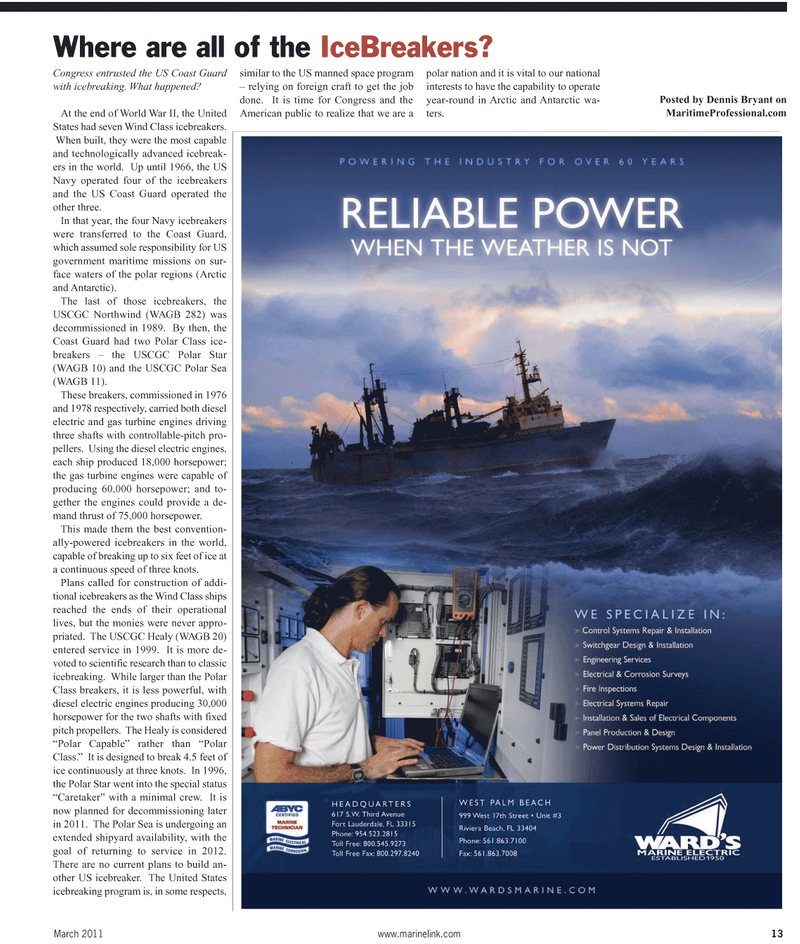
Page 13: of Maritime Reporter Magazine (March 2011)
Ship Repair & Conversion
Read this page in Pdf, Flash or Html5 edition of March 2011 Maritime Reporter Magazine
March 2011 www.marinelink.com 13
Congress entrusted the US Coast Guard with icebreaking. What happened?
At the end of World War II, the United
States had seven Wind Class icebreakers.
When built, they were the most capable and technologically advanced icebreak- ers in the world. Up until 1966, the US
Navy operated four of the icebreakers and the US Coast Guard operated the other three.
In that year, the four Navy icebreakers were transferred to the Coast Guard, which assumed sole responsibility for US government maritime missions on sur- face waters of the polar regions (Arctic and Antarctic).
The last of those icebreakers, the
USCGC Northwind (WAGB 282) was decommissioned in 1989. By then, the
Coast Guard had two Polar Class ice- breakers – the USCGC Polar Star (WAGB 10) and the USCGC Polar Sea (WAGB 11).
These breakers, commissioned in 1976 and 1978 respectively, carried both diesel electric and gas turbine engines driving three shafts with controllable-pitch pro- pellers. Using the diesel electric engines, each ship produced 18,000 horsepower; the gas turbine engines were capable of producing 60,000 horsepower; and to- gether the engines could provide a de- mand thrust of 75,000 horsepower.
This made them the best convention- ally-powered icebreakers in the world, capable of breaking up to six feet of ice at a continuous speed of three knots.
Plans called for construction of addi- tional icebreakers as the Wind Class ships reached the ends of their operational lives, but the monies were never appro- priated. The USCGC Healy (WAGB 20) entered service in 1999. It is more de- voted to scientific research than to classic icebreaking. While larger than the Polar
Class breakers, it is less powerful, with diesel electric engines producing 30,000 horsepower for the two shafts with fixed pitch propellers. The Healy is considered “Polar Capable” rather than “Polar
Class.” It is designed to break 4.5 feet of ice continuously at three knots. In 1996, the Polar Star went into the special status “Caretaker” with a minimal crew. It is now planned for decommissioning later in 2011. The Polar Sea is undergoing an extended shipyard availability, with the goal of returning to service in 2012.
There are no current plans to build an- other US icebreaker. The United States icebreaking program is, in some respects, similar to the US manned space program – relying on foreign craft to get the job done. It is time for Congress and the
American public to realize that we are a polar nation and it is vital to our national interests to have the capability to operate year-round in Arctic and Antarctic wa- ters.
Posted by Dennis Bryant on
MaritimeProfessional.com
Where are all of the IceBreakers?

 12
12

 14
14
